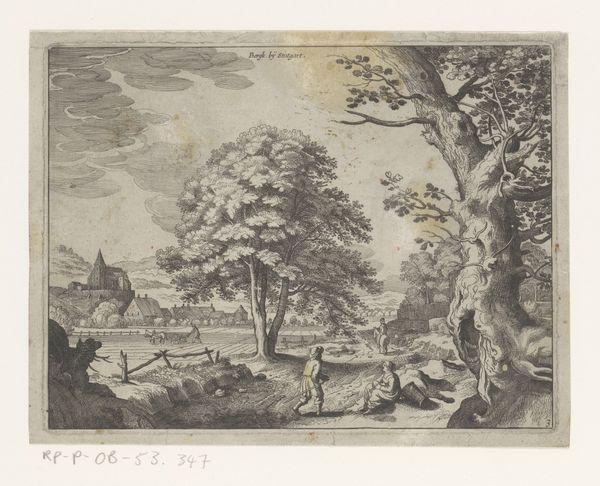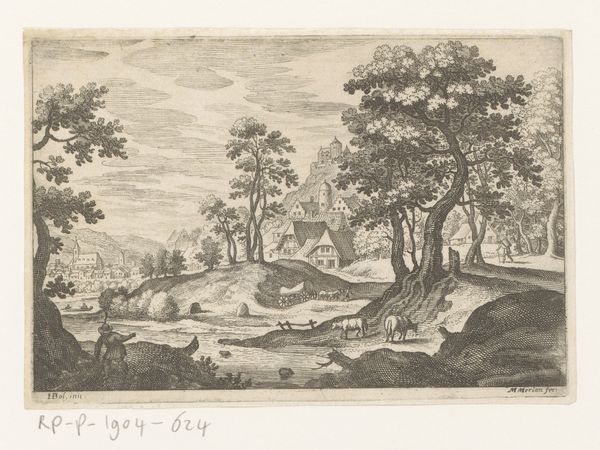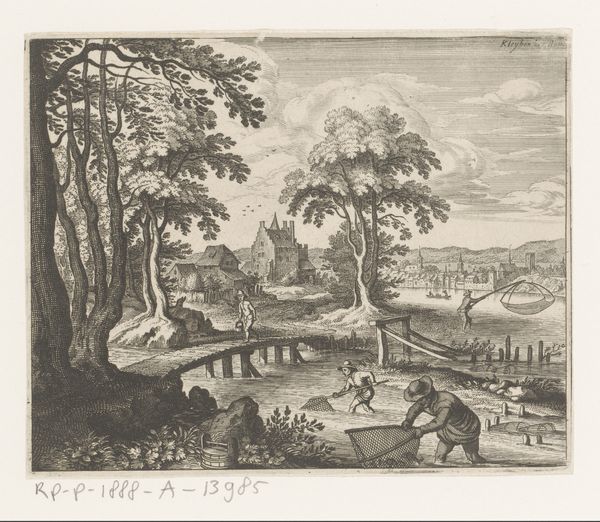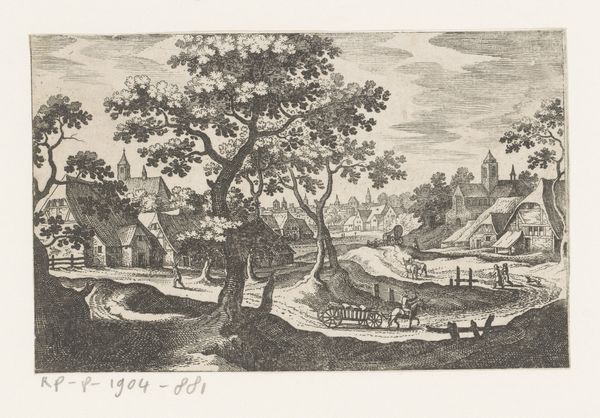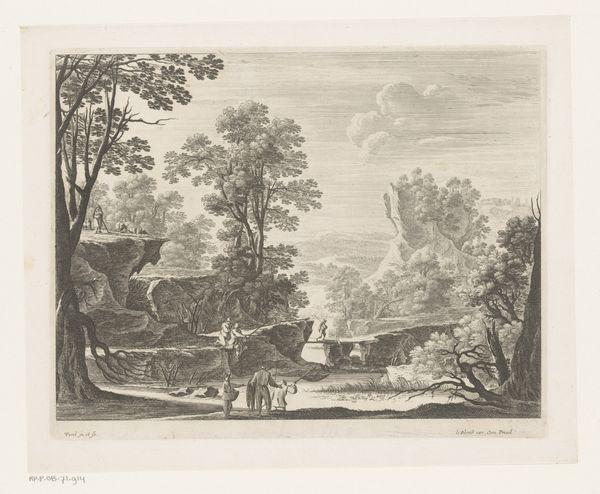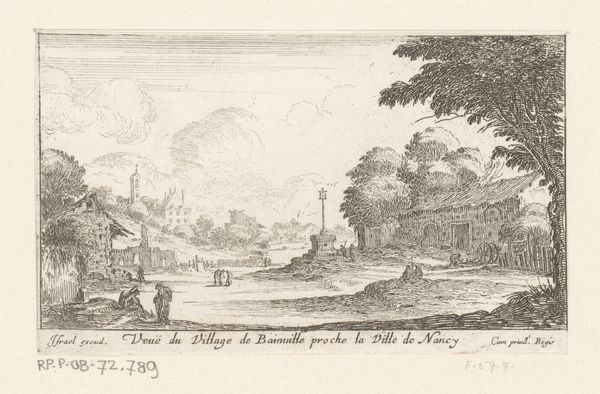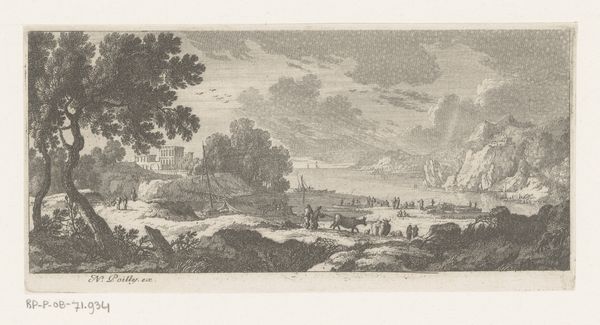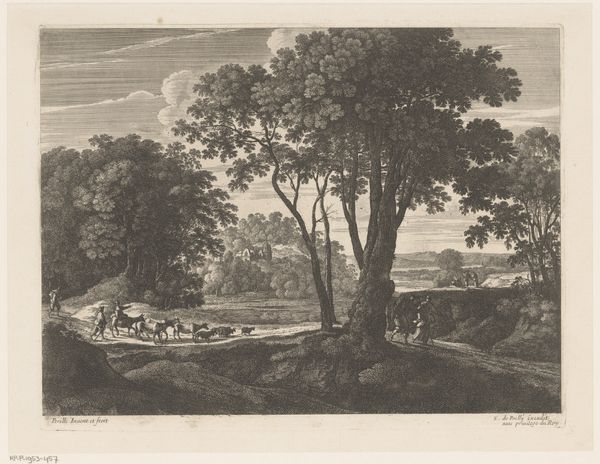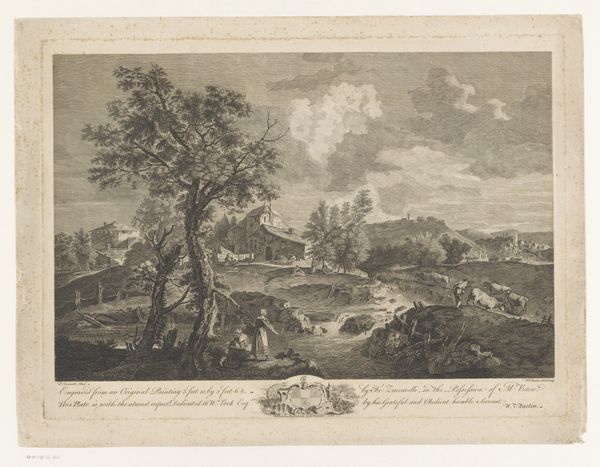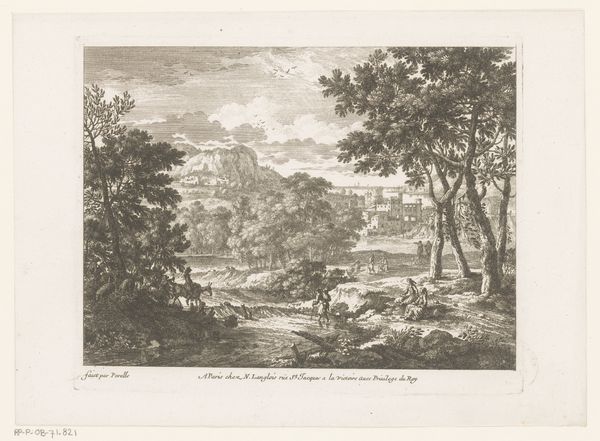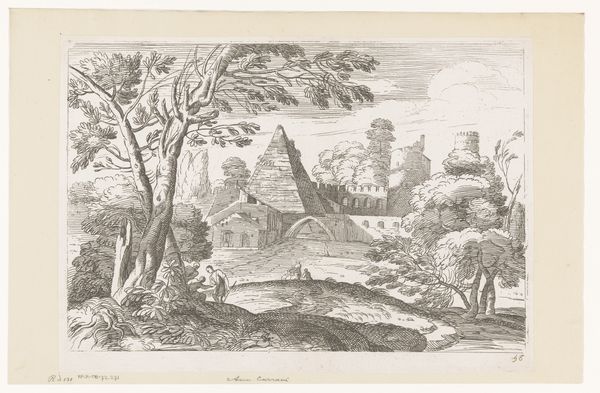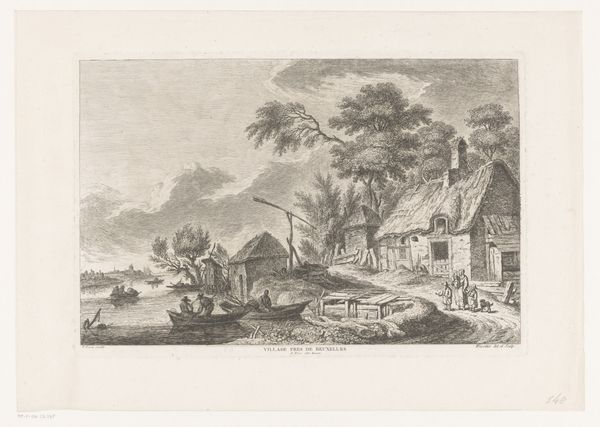
drawing, print, engraving
#
drawing
#
ink drawing
#
medieval
#
pen drawing
# print
#
old engraving style
#
landscape
#
engraving
Dimensions: height 101 mm, width 151 mm
Copyright: Rijks Museum: Open Domain
Curator: What a captivating image! Matthäus Merian's "Dorpsgezicht," dating from around 1603 to 1650 and held at the Rijksmuseum, presents a village scene rendered in meticulous detail. It's primarily crafted from drawing and engraving mediums. Editor: It's fascinating, isn’t it? I'm immediately struck by the contrast; it’s stark yet intricate, with the figures seeming almost incidental against this very precisely defined backdrop of buildings and trees. Almost as if the focus of this composition is not people at all. Curator: Exactly. The printmaking process itself, the use of ink and the act of engraving, became a form of social practice, connecting Merian to a network of craftsmen, printers and patrons who were all involved in the dissemination of knowledge and the visual documentation of the world. What are we actually looking at when observing images like this one and who was consuming such pieces? Editor: Indeed, it begs the question of who had access to it and for what purposes these images were made. Consider that prints like this, circulated widely, shaped perceptions of village life and Dutch identity in the period. Was it documentation, idealized fantasy, or propaganda, perhaps? Curator: Well, it's difficult to deny the artistry itself. Notice how the varying line weights give a sense of depth to the landscape, guiding your eye toward the village church in the distance. The materiality also makes it an interesting item: drawing and print, high art and craft merged into one! Editor: Right. The inclusion of everyday activities is also significant. People going about their lives, horse-drawn carts, interactions between community members—it all contributes to this wider narrative that, like broadsheets, contributed in building ideas of civic order. How did Merian see his role in crafting and reflecting reality? Curator: It definitely moves beyond pure representation, acting almost as a political statement regarding his role as an engraver of that time. It's as much about the physical making of an image and the context in which it existed as it is about what it represents on the surface. Editor: The intersection between materiality, method and consumption—that's how we uncover so many untold stories about art in society. This wasn't just art for art’s sake, I am convinced. Curator: A worthy reminder that the means of artistic production is itself an incredibly social and historical force that we have to consider when contextualizing artwork.
Comments
No comments
Be the first to comment and join the conversation on the ultimate creative platform.
